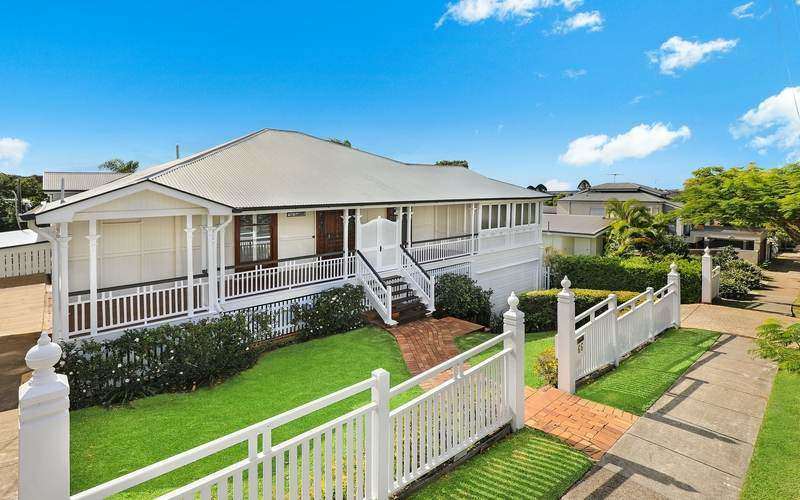The HEM is a benchmark used by many lenders to estimate a borrower’s living expenses, helping to determine how much someone can afford in home loan repayments.
It is designed to be used to compare reported expenditure against typical expenditure. However, it is commonly used exclusively – a practice that is widely controversial, as the HEM can underestimate non-essential living expenses, potentially leaving borrowers struggling to meet home loan repayments if approved.
What is the Household Expenditure Measure (HEM)?
The HEM (Household Expenditure Measure), developed by the Melbourne Institute, allows lenders to estimate a home loan applicant’s regular expenses and thereby assess their borrowing power.
It's based on the Australian Bureau of Statistics’ (ABS) Household Expenditure Survey, which considers the typical spending behaviour of Australians. The survey is conducted once every six years and the HEM is adjusted for inflation each quarter.
See also: Borrowing Power Calculator
Many lenders require home loan applicants to provide an estimation of their weekly or monthly spend on essentials like groceries, transport, and utilities. Some lenders provide a living expenses calculator to help you work out your average weekly or monthly spend.
It’s then expected the lender will compare the living expenses figure you provide against the HEM calculation for someone with a similar lifestyle.
A lender may then use the higher of these two figures (your declared expenses or the HEM) to decide how much you can afford in regular home loan repayments, or if a mortgage fits into your budget at all.
Further, if your declared expenses are notably higher or lower than the HEM, a lender might reach out to make sure you’ve entered your spending information correctly.
The HEM considers essential (typically called non-discretionary) spending. It also factors in a small amount of non-essential (discretionary) spending, allowing for the occasional meal out or activity.
It doesn’t factor in every expense, however.
Costs like health insurance and private school fees are generally left out of the calculations, but lenders often consider such outlays in addition to the HEM.
It also doesn’t factor in rent or mortgage repayments.
Of course, households come in different shapes and sizes, and therefore will have different spending habits and essential needs.
The HEM takes this into consideration by factoring in a would-be borrower’s location, income, lifestyle standard, relationship status, and how many dependents they have to determine their reasonable expenses.
Armed with all the information an applicant has provided, a lender will hold up their expenditure against a matrix – known as a HEM table – to consider their expected expenses.
The HEM is scaled based on an applicant's income. So, one person with a low income and a lavish lifestyle might be assumed to spend less than another person with a high income and a lavish lifestyle.
Why is the HEM controversial?
The main controversy around HEM stems from the fact it can vastly underestimate non-essential living expenses. That has the potential of leaving borrowers struggling to meet their home loan repayments if they’re approved for a mortgage.
Lending regulators have shown notable concern about banks’ reliance on HEM, with the Australian Securities and Investments Commission (ASIC) even losing to Westpac after taking the bank to court on the matter – the famous ‘wagyu and shiraz’ case, detailed below.
However, the Banking Royal Commission really put HEM under the spotlight when it revealed how shortcuts were being made in home loan approvals and living expenses were being underestimated.
One of the HEM’s developers, Professor Guyon Kalb from the Melbourne Institute, told a 2019 ASIC public hearing on responsible lending that banks aren’t supposed to rely solely on the benchmark to approve home loan applications.
Ms Kalb said banks should ask households about their expenditure and compare their answer against the HEM benchmark to flag if an applicant is underestimating their expenses.
“Reporting on your expenditure is actually really hard,” she said.
“If you ask what you spent last week, most people underestimate.
“And so … [to] have some guideline as to what other people that are similar to that household are typically spending is useful to just get a better understanding of where the reported expenditure sits, and whether you would want to follow up with further questions.”
In the Royal Commission’s final report, Commissioner Kenneth Hayne said the HEM benchmark is not a sufficient alternative to verification of a borrower’s expenditure, but stopped short of scrapping HEM altogether because lenders had already started moving away from it.
Indeed, speaking to the Commission in 2018, CommBank CEO Matt Comyn said he was confident lenders would soon rely on the HEM just 50% of the time.
“[W]e’re doing a better job of discovering what a customer’s declared living expenses figure actually is, and, therefore, HEM as the prudent floor is being relied on less and less,” Mr Comyn said.
Analysts at investment bank UBS once estimated that 80% of all home loans in Australia were approved using the HEM in 2017.
The Banking Royal Commission found ANZ automatically approved more than seven in ten home loan applications using the benchmark without verifying borrowers’ living expenses.
The smallest of the big four later vowed to reduce its reliance on the HEM, using it to assess just one-third of mortgages.
Many other banks have since followed suit.
Westpac with wagyu washed down with shiraz
ASIC took Westpac to court in 2019 over the bank’s reliance on the HEM method.
It claimed the bank ignored customers' actual expenses even when these were higher than HEM estimates while approving home loans from 2011 to 2015.
Westpac contested, asserting it had factored in declared expenses to make sure they didn’t surpass 70% of a person’s income.
The court, led by Justice Nye Perram, dismissed the case, noting that essential living costs are the only relevant expenses for loan repayment assessments. He famously remarked that lifestyle choices could be adjusted to afford a home.
“I may eat wagyu beef every day washed down with the finest shiraz but if I really want my new home, I can make do on much more modest fare,” Justice Nye famously said.
What expenses may be considered in my home loan application?
By law – the National Consumer Credit Protection Act 2009 and other responsible lending guidelines, to be exact – lenders are required to take living expenses into consideration when contemplating home loan applications.
This ensures they have a larger picture of a borrower’s financial situation and can ascertain whether a borrower will be able to repay their loan.
Since the Banking Royal Commission, lending requirements have tightened and banks largely want to know exactly where you’re spending your money.
That may have made it more difficult for some applicants to secure home loan approvals. Tales of lenders rejecting applications because the applicant spent too much money on Uber Eats or had an outstanding Afterpay debt have hit headlines in recent years.
However, those stories seem rare and potentially inflated – you can’t believe everything you read on the internet, kids.
For the most part, lenders just want to see that you can afford to meet your obligations if you were to secure a home loan.
Thus, as long as you can show you’ll be able to afford a mortgage and your spending doesn’t raise any red flags (such as regular gambling expenditure or repayments on undeclared debts), your expenses probably won’t be overly scrutinised.
Some common living expenses you may be asked to provide an estimate of in your home loan application include:
- Groceries
- Transport
- Childcare
- Entertainment and recreation
- Utilities
- Education
- Clothing and personal care
- Medical, health, and fitness
- Insurance
- Any other regular outgoing expenses
Some of the market’s best home loan deals
Buying a home or looking to refinance? The table below features home loans with some of the lowest interest rates on the market for owner occupiers.
Lender Home Loan Interest Rate Comparison Rate* Monthly Repayment Repayment type Rate Type Offset Redraw Ongoing Fees Upfront Fees LVR Lump Sum Repayment Additional Repayments Split Loan Option Tags Features Link Compare
Featured Online ExclusiveUp To $4K Cashback
Featured Apply In Minutes
Featured Unlimited Redraws
Savings.com.au’s two cents
To give yourself the best chance of being approved for a home loan, it’s important to be organised.
Make sure you can provide a bank or lender with plenty of information about your living expenses.
If you’re unsure of whether your expenditure is fit for home loan approval, you could print out your bank statements for the last three to six months and highlight any unnecessary expenses.
Doing so might give you a chance to address any problematic spending behaviours that could prevent you from getting a home loan.
Article originally published by Emma Duffy on 26 May 2021, updated by Brooke Cooper on 26 April 2024
Image by Boggy via Adobe Stock

Ready, Set, Buy!
Learn everything you need to know about buying property – from choosing the right property and home loan, to the purchasing process, tips to save money and more!
With bonus Q&A sheet and Crossword!







 Brooke Cooper
Brooke Cooper

 Harry O'Sullivan
Harry O'Sullivan